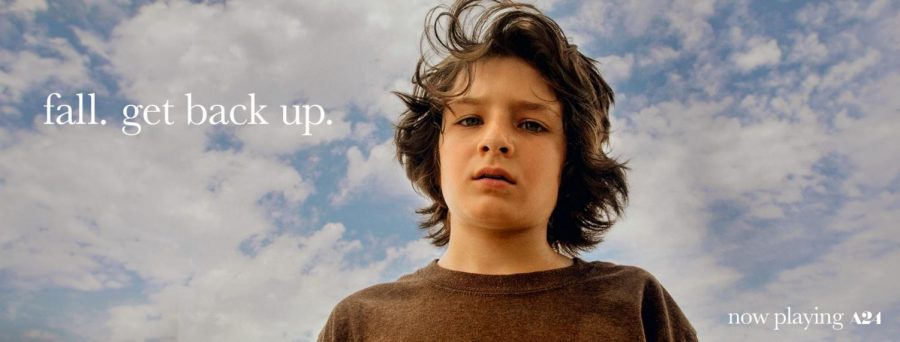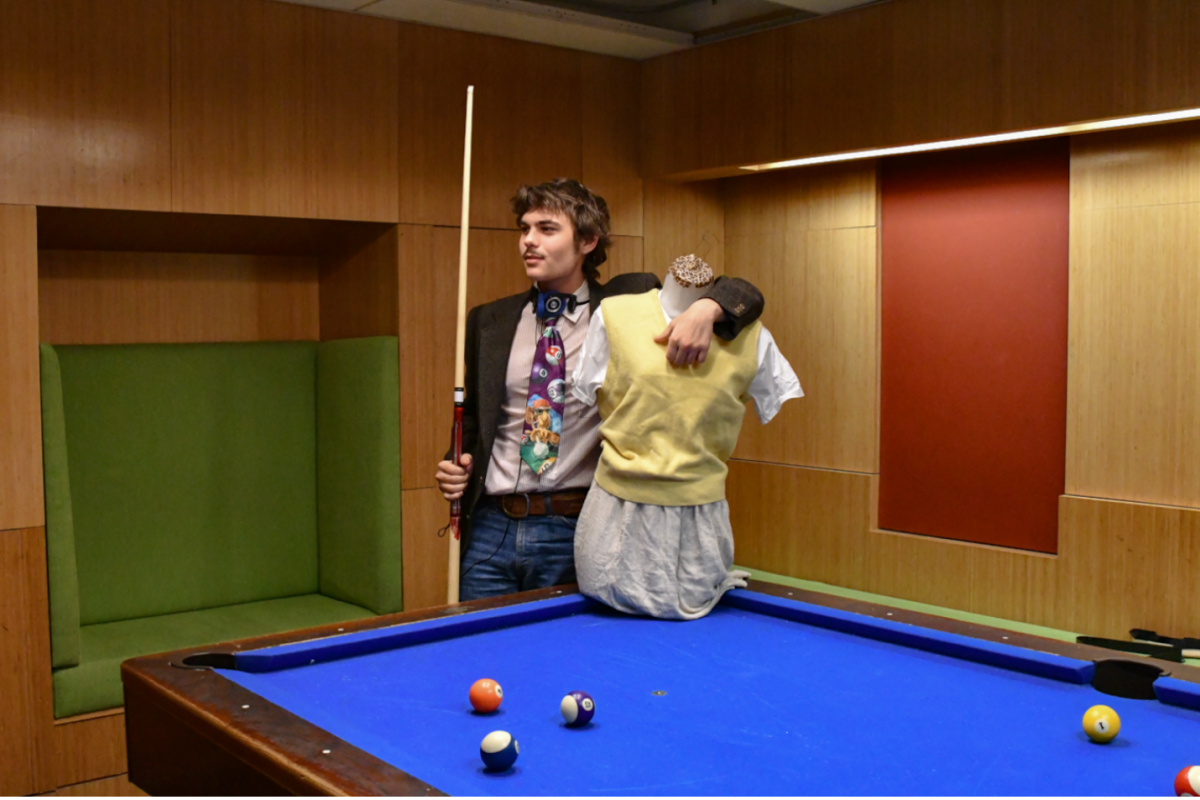The lights dim, the mild chattering of the audience fades and the shared tension in the room starts to crackle.
Then, the screen narrows.
Shot on hazy, nostalgia-inducing 16mm film and framed by the unconventional 4:3 aspect ratio, “Mid90s” is a venture back to an era framed by adolescence and pre-internet naïveté. It is an age that many of its viewers will remember primarily through references and grainy television episodes enshrouded in canned laughter.
Despite its setting in a time frame that a large portion of its viewership will recall only vaguely, the film’s themes and characters are immutably accessible. “Mid90s” is a quiet coming-of-age story that doesn’t solely rely on cheap references or nostalgia — often an easy fallback for films of this genre.
The film follows 13-year-old Stevie (Sunny Suljic), as he struggles with his home life and his desire to infiltrate the group of older skaters that he idolizes. As the audience watches Stevie mature, sometimes to their amusement, sometimes to their horror and even sometimes to their disgust, they also see their own journey through the trials and tribulations of adolescence.
Suljic is subtle, with the cherub-like features of something pure and untouched by natural evil. To see him in the role of a young boy corrupted by the cult of toxic masculinity and cycles of poverty is heartbreaking. Despite his age, Suljic delivers a performance that is raw in nature. He is helped by his supporting cast, playing a group of boys whose performative apathy is betrayed by their instinctual love for one another. In particular, Na-kel Smith, playing Ray, the unofficial pack leader, portrays a humble dignity and quietness that is refreshing to see in a young Black character. The cast of this film is undeniably and uniquely talented in an effortless way that is hard to find when it comes to young actors.
“Mid90s” is reminiscent of another recent directorial debut by Bo Burnham (“Eighth Grade”). Though these both contain similar subject matter, the approaches are very different. This distinction owes a lot to the gender differentiation between these films.
“Eighth Grade” shows the often-ignored adolescent journey of young girls, forcing its viewer back into the hallways of middle school. The representation of the awkwardness and loneliness of growing up on the fringes of popularity reduces most of the viewing experience to a constant squirm.
In comparison, “Mid90s” is much less focused on drawing a violent reaction from the viewer. It moves slowly and, in some ways, more subtly. While there is a meandering aspect to both of these storylines, “Mid90s” focuses on an ensemble cast rather than solely its main character. The film imposes a larger inquiry onto its audience about the impact of masculinity, drug and alcohol culture and the effects of wealth inequality on American youth.
It is not meant to capture the quintessential teenage experience, because it recognizes that there is no quintessential teenage experience.
Both films are striking in their diegetic and production similarities, but ultimately accomplish different goals and elicit different reactions. It is impressive to see that there are still new possible variations for the coming-of-age genre.
There are clear indications that this is Jonah Hill’s first shot in the director’s chair, but he has obviously acquired a great deal of assistance from professionals in his field. The contributions of Christopher Blauvelt (“Certain Women”) as cinematographer cannot be overstated. He is also aided immensely from a heavily accoladed cast, including supporting appearances by Lucas Hedges and Katherine Waterston, and undoubtedly by securing Suljic as his lead. The young actor already turned heads last year in Yorgos Lanthimos’ “The Killing of a Sacred Deer.”
The sound in this film is also integral to its execution. Anyone who knows the names Trent Reznor or Atticus Ross will feel their heart rates increase when seeing their names in the title cards. The original score, composed of beats that rattle through your bones, combined with carefully-curated 90s hip-hop makes for an unforgettable sound experience.
Hill has clearly paid close attention to every aspect of his creation. There is still room for improvement, but for a first-time excursion, it is nothing short of remarkable.
There is an authenticity to this production that hums underneath every shot. The story is clearly a passion project for Hill, ingrained in his own experiences. He shows definite promise as both a director and writer and can only improve as he — like Stevie — matures.
Courtney Song can be reached at [email protected].



















